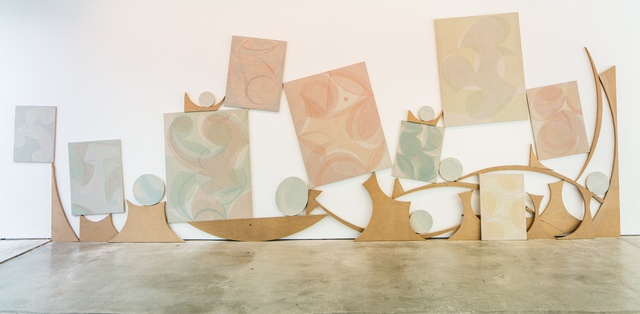A round-up of the week’s reviews…
Lost Kingdoms: Hindu-Buddhist Sculpture at the Metropolitan Museum (Louise Nicholson)
Kalkin, Vishnu’s Future Avatar (detail) Lent by National Museum of Cambodia, Phnom Penh. Photo: Thierry Ollivier
Now the Metropolitan Museum of Art, New York, has staged a landmark show, ‘Lost Kingdoms’. For the first time, a major loan show of these sculptures – many of them masterpieces, many of them monumental in size – turns the spotlight on seven kingdoms ranging from Burma’s Pyu to Indonesia’s Srivijaya, which was a regional centre for Buddhist learning with key connections to India’s major monasteries including Nalanda, Sarnath and Amaravati.
Richard Wilson’s sculpture ‘Slipstream’, on permanent display at London’s Heathrow Airport. Photo: Steve Bates. © LHR Airports Limited.
The sheer statistics of Slipstream are impressive. It is as large as an A330-300 Airbus: 70 metres in length, weighing 77 tonnes; its curvilinear 1,650 square metre aluminium skin is held together with half a million rivets. But as Wilson’s example of the arm in the bucket illustrates, Slipstream is essentially concerned with a subject both simple and elusive: making visible in three dimensions the passage through the air of a fast moving object. It is a huge, highly engineered aluminium model of a hole in space. Or to put it another way, it is a sculpture of movement.
‘Incense Burner’ Commissioned by the Mother of Sultan Murad IV (A.H. 1059 / 1649 C.E), Commissioned by the Mother of Sultan Murad IV © National Museum, Riyadh
First Look: Roads of Arabia at the Nelson-Atkins Museum of Art (Kimberly Masteller)
‘Roads of Arabia’ presents new archaeological discoveries from Saudi Arabia. The objects range in date from pre-historic to the present, and include colossal figurative sculptures and funerary stele, intricate metalwork, and elegant calligraphies. Arabia was a crossroads of trade in the ancient world and a sacred centre since the coming of Islam. For these reasons, Arabia gave birth to civilisations and also became a host to diverse peoples and cultural influences. One can trace the lives of these people through these artefacts.
Aida Mahmudova founded YARAT, a not-for-profit organisation that supports and promotes Azerbaijani art, in 2011.
Grace Banks interviews YARAT’s Aida Mahmudova about contemporary art from Azerbaijan
YARAT are of course based in Baku; the city and its people are central to our activities. The concept of the show is to bring the culture of Azerbaijan side by side with those of its neighbours: Iran, Russia, and Georgia. Zaha Hadid’s [Heydar Aliyev] Center is such a striking addition to Baku’s architectural landscape and a fitting location for an exhibition of such scope and broad international appeal.
‘Drying Time’ (installation view; 2014), Yelena Popova Courtesy of the artist and Paradise Row Gallery
Yelena Popova ‘Drying Time’ at Paradise Row (Emily Burns)
Are these paintings, or semi-painted installations? Is the focus the invisibility of the paint or the visibility of the canvas? And are they abstract or figurative – portraits, even?
